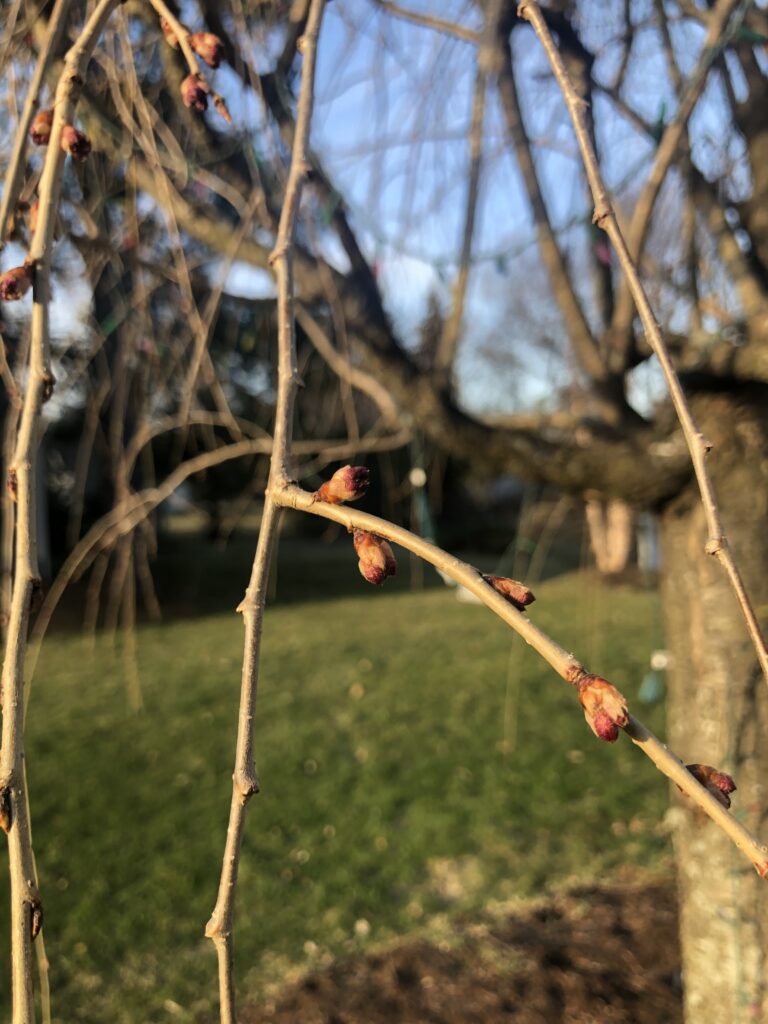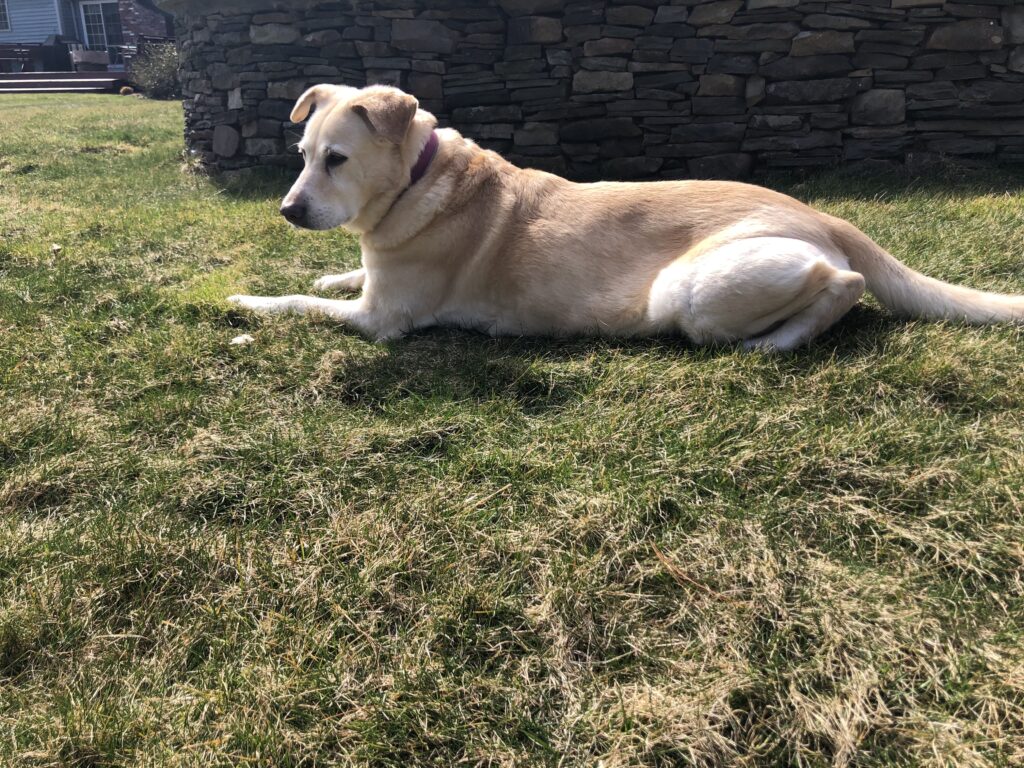Due to the recent outbreak of the coronavirus, I am back to living at home with my family in Northborough, Massachusetts. Now that I am no longer living on campus, I needed to say a sad goodbye to my phenology spot at Centennial Brook and find a new one here at home. Luckily for me, I don’t need to go too far because behind my house there is a patch of trees that connects to the woods a few houses over. You might remember me mentioning this spot in December where I mentioned how this influenced my sense of place (see blog post titled “Home”). This place in my yard is now my new phenology spot.
When I went outside today, the weather was 61 degrees Fahrenheit and sunny making me excited for the new spring weather. There was also a slight breeze that blew around the spring aromas of growth which I loved. One of the main things I noticed that showed signs of spring was the willow tree in my yard starting to grow short reddish-brown buds (Figure 1). This is my favorite tree in my yard not only because it was planted when I was born but every year it blossoms with pink flowers around my birthday and a family of birds builds a nest in it every year so we always watch the eggs hatch.

Another piece of evidence that prooves spring is coming is the crocuses in my yard starting to pop up on the edge of the woods (Figure 2). This is assuring me that the warmer weeks are ahead because these flowers sprout right before the spring weather. After I looked at these flowers I started to look at the trees at the edge of the woods and noticed how dead and scragely the crab apple tree was looking (Figure 3). This tree still grows apples every year but I never looked at it before the leaves grew in and the bark is extremely dark and flakey looking. The tree overall looks very unhealthy in my opinion due to having seen better looking trees.


This beautiful day just kept getting better and better after hearing and seeing the birds flying around in the trees. There was one bird call that I found really interesting that I had never heard before (bird audio). A few birds I recognized were the bluejay, cardinal, and robin which are very common and I am used to hearing and seeing. Another thing I found interesting was a piece of bark with lichen all over it (Figure 4). I wanted to know why I was finding lichen on a piece of dead bark and after researching I found that “when they are found on dead or dying branches, particularly when accompanied by thinning of the tree crown, they have located themselves because of the geater availability of light from leaf drop” (Eichinger, 2014). I found this interesting because I didn’t think that this was something that would happen voluntary but it is. I do miss my spot at UVM and I definately will visit it when I return in the fall but for now I am excited to see the changes in my backyard that I may not have noticed before.


Sources: Eichinger, B. (2014, August 19). Lichen has a lot to tell you about your trees. Retrieved March 27, 2020, from https://www.courierpostonline.com/story/life/home-garden/2014/08/18/lichen-lot-tell-trees/14266907/

